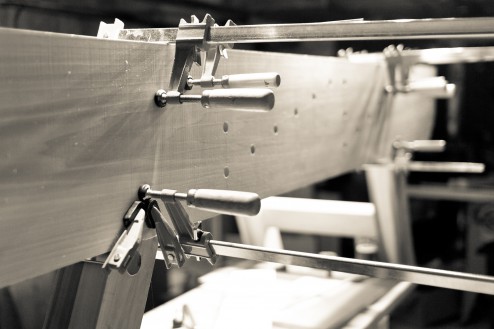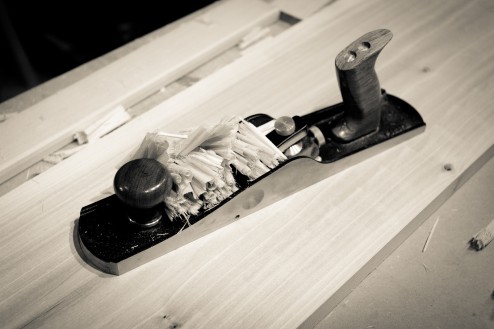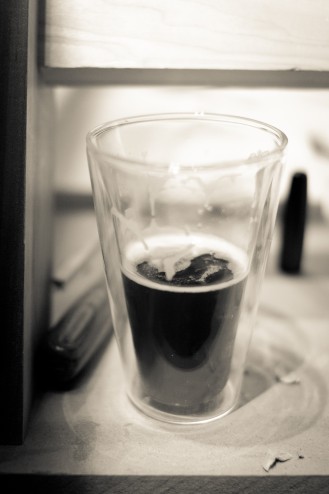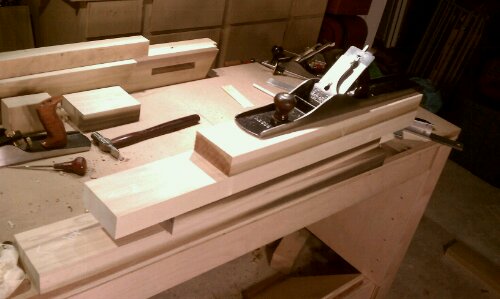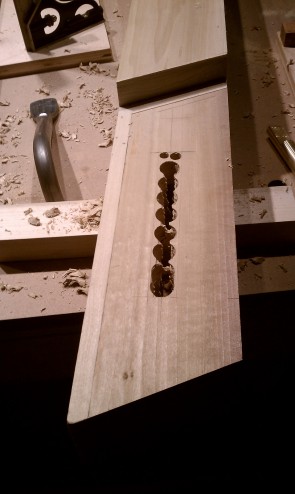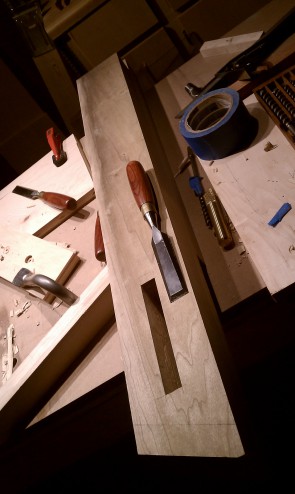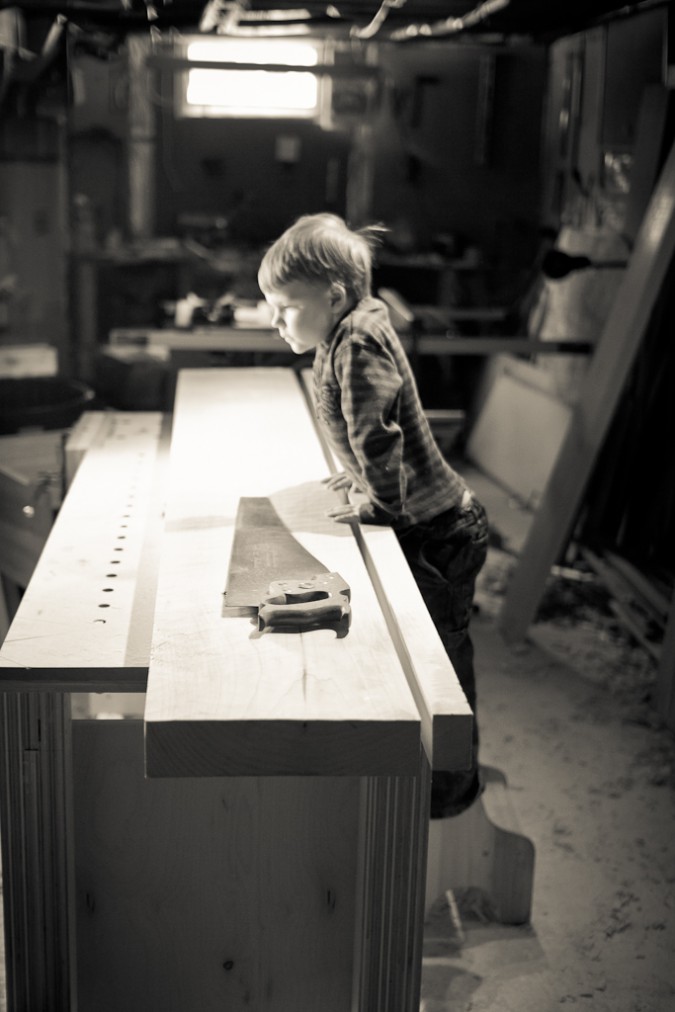
For a while, I’ve been mulling over how to take the 12/4 14″ poplar board and get it down to the 11 1/2″ board I need for the top. My initial plan had been to do the rip on my table saw with a rip blade. Poplar is pretty soft and with a good ripper, I was confident I could manage it. However, pushing a board of this size through a table saw is no mean task. After a few trial runs with supports in place, I realized I was in a bit of a pickle.
See, this board has a fair bit of wind in it. When you run a board through a table saw, you want the face that’s touching the table and the face that’s riding the fence to be flat and square. Otherwise, as I quickly found out on the dry runs, the board will cast away from the fence during the push. With a board this size, I elected not to take any risks. I could either flatten the board out and then run it, or rip the sucker by hand.
After taking a few exploratory passes with the fore plane, I determined that I could save a fair bit of thickness by ripping the board before flattening it. So, off to the races.
I started out over the board, in the classic ripping posture, but my back and shoulder quickly decided this was a bad move. The position that really worked for was standing next to the board with it clamped to my existing bench, blade facing away from me, just like in this video by Chris Schwarz:
It takes a while to get the hang of how to apply pressure the blade in this setup and to work out a rhythm. I laid out some marks every six inches to get an idea of how fast I was going; in the beginning I was doing about an inch a minute and by the end I’d about doubled that. All in the all, the rip took about hour of effort, with a bunch of breaks for water, rest, and to gauge my progress.
I did find that, for whatever reason, keeping the blade plumb in the stand-on-the-side configuration was much much easier. I think I just need to practice more with the “classic” posture, but it was pretty sweet to see that nice square 8′ long rip once I was done.
